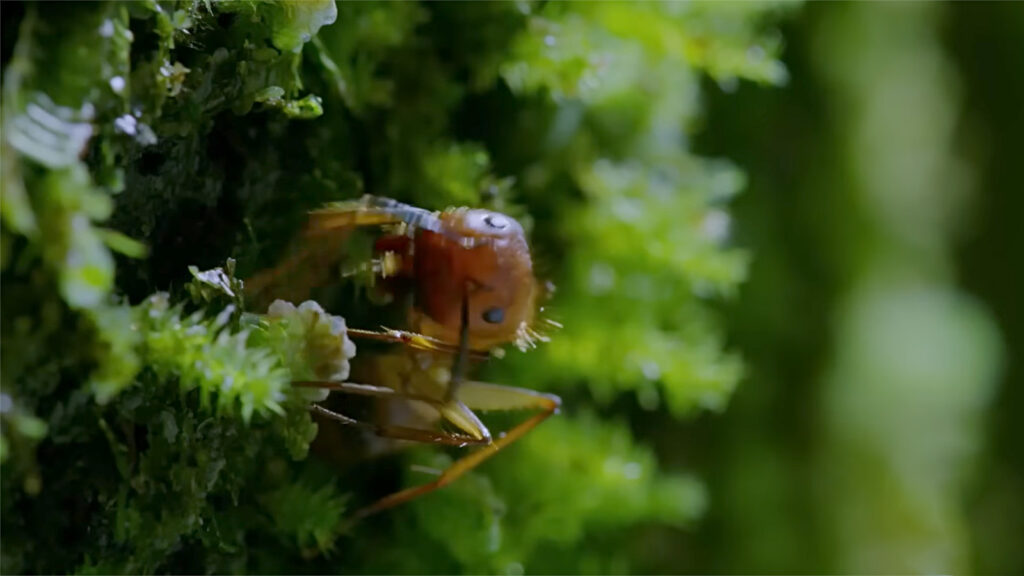“The Last of Us” just wrapped its first season with the heroes of the hit HBO Max series headed back to Jackson, Wyoming — seemingly the last stand for civilization after a variant of cordyceps fungus that attacks ants makes the leap to humans, taking over most of humanity.
The show has become a viral hit, with 8.1 million watching the season finale — a 74% increase over near-record viewership for its debut episode. That suggests staying power for the series that’s set in Wyoming. In fact, a second season has already been greenlit.
With the whole cordyceps fungus thing sticking around for awhile, it’s time to answer just how realistic are fungified human pseudo-zombies, so we can all sleep better at night.
From The Fungi Expert
University of Wyoming fungi expert Steve Miller tells Cowboy State Daily that the overall cordyceps takeover concept is actually very realistic — for insects.
“There are quite a few cordyceps species that attack ants and lepidopteran larvae and that kind of thing,” Miller said. “Really, one of the best-known attacks is ants in actuality.”
Ophiocordyceps unilateralis, the species that attacks ants, is very familiar to Miller. He uses it as an example when he teaches mycology students about symbiosis.
“What ends up happening is that the spores from the fungus find their way onto an ant and it grows through its body and into its head,” Miller said.
After that, the science gets what Miller calls interesting, although most of us would probably just call it very weird.
“It kind of modifies the behavior of the ants. The ant will climb up onto a plant and clamp its mandibles on the edge of a leaf so it’s up above all of the other ants,” he said.
Then a mushroom fungus grows out of the ant’s head, killing it for good. The mushroom then produces spores that land over and around all the other unsuspecting ants below, so the cycle repeats.
“So as far as that goes, the science for the ants is very real,” Miller said.

Jumping To Humans A Stretch
Ants, of course, have a much lower body temperature than humans, and that would be just one one of the main hurdles in zombifying humans with cordyceps.
The show does take some pains to explain that global climate change has pushed the cordyceps fungus to adapt to warmer temperatures.
But ants also have a much simpler nervous system than humans.
There are indeed some fungi that can, and do, infect mammals, Miller said, though perhaps not in the same aggressive way the show portrays.
In particular, there’s a fungus that takes over mice.
“The mouse actually becomes really bizarre,” Miller said. “There’s some really cool YouTube videos online. They get, you know, totally brave. They’ll run out after cats and things like that, trying to get the cat to eat them.”
Once eaten, the mouse is digested — fungus and all — eventually passing through the cat’s feces to brand new mice, infecting them, so that the cycle begins anew.
Fungicized pseudo-zombies in the “The Last of Us,” however, appear to be a lot more aggressive than the examples nature offers, Miller said.
“But it doesn’t take too much imagination to kind of go in that direction,” he said. “You know, what’s a zombie show if they’re not chasing you?”
Pandemics Becoming A Real Concern
In the “The Last of Us,” the cordyceps invasion is a worldwide pandemic caused by infected wheat crops that were distributed around the globe in bakery and cereal products. That caused an outbreak everywhere all at once in anyone who had eaten something containing flour.
That’s not, as it happens, totally unrealistic, Miller believes.
“The wheat is an interesting connection,” he said. “Because, you know, you’ve heard of ergot, and that fungus is very closely related to cordyceps.”
Ergot produces an assortment of alkaloids that cause symptoms ranging from muscle constriction to hallucinations similar to those from LSD.
Ergot is thought to have played a role in historical tragedies, such as the Salem Witch Trials.
“Young people who ate this bread with the fungus and alkaloids in it, you know, it’d be like putting a rubber band around your arm and eventually it would start to hurt,” Miller said. “And then you’re having these hallucinations and everything else.”
But in that case, it wasn’t the fungus itself causing aberrant behavior. It was the chemical toxins the fungus produced, which were left behind in the grain.
Species Jumps Have Happened
Still, Miller said, a global pandemic where a pathogen jumps species is realistic, and it has happened quite recently.
“I mean, we just got done with COVID, or maybe we’re still going through COVID, you know,” Miller said. “And no one really knows what the derivation of that disease was. But I mean, either way would be a good movie, right? I mean, either it was lab-released or it got into the population of animals in that market in China or whatever. So, you can kind of see the connection there.”
Coughing zombies might not be a great movie though, Miller acknowledged.
“But it certainly is possible that at some point, you know, this could happen, I guess,” Miller said. “I have to say that, you know, with global climate change, we’re already seeing some pretty bizarre changes in geographic patterns and hosts switching between a lot of organisms.”
That’s not just true for fungi, Miller said, but for lots of other types of pathogens as well.
He believes it’s probably even playing a role in the recent Centers for Disease Control and Prevention announcement about dangers from a different fungus, Candidas auris, a variety of yeast.

Immunocompromised Can Become Mutation Machines
Here’s another interesting point about fungi and mutations. In the real world, most of the time a fungus successfully infects people, it’s because they are immunocompromised.
“If you get a lot of immunocompromised people, then you stand a chance of, you know, random mutations and mating and stuff like that,” Miller said, “ which could help spread things like that. But, so, it’s kind of an interesting, intriguing idea loosely based on facts.”
Some fungi, too, can switch between types.
There’s a fungus in particular that normally forms a kind of mycelium, like the cordyceps on the show do, but then turns into a unicellular, yeast-like fungus once inside the human body. That change is spurred by temperature change.
“There are a few fungi that can kind of, you know, move back and forth between forms, and it really makes a big difference as to what the body temperature is as far as what they can do,” Miller said.
Once inside the human body, changing to a yeast-like fungus allows the pathogen to spread more quickly.
“If you think about beer, the yeast is only there for a couple of days,” Miller said. “It just reproduces so rapidly and takes up so many of the nutrients making the beer. That yeast-like phase is just amazingly efficient, so in the body, you know, these fungal diseases can sometimes do that.”


Mycelium Transfer Scientifically Iffy
Spreading cordyceps through mycelium is one point in the show where Miller feels the science doesn’t quite hang together.
The show’s producers did that so they wouldn’t have to deal with gas masks, which would interfere with showing the characters’ emotions during the film.
“If they would have, you know, hired like a university mycologist, maybe somebody like me, we could have worked around that,” Miller said. “You know the spores, like, could only attack certain people at certain times or are only viable at certain times. We could have gotten them out of the gas masks, but they didn’t invite me, so …”
The choice of Jackson, Wyoming, however, was a good one for civilization’s last stronghold, Miller suggested.
It’s easier to avoid infected humans in a remote area than in metropolitan areas, but, also, it gets pretty cold in Jackson in the winter. Cordyceps is among fungi that don’t like it cold, Miller said. That would help keep the monsters at bay for a while.
On second thought, however, there is a variety of Chinese fungi that are close cousins to cordyceps which grow in the mountains.
Perhaps Jackson is not, after all, 100% safe for season two.





